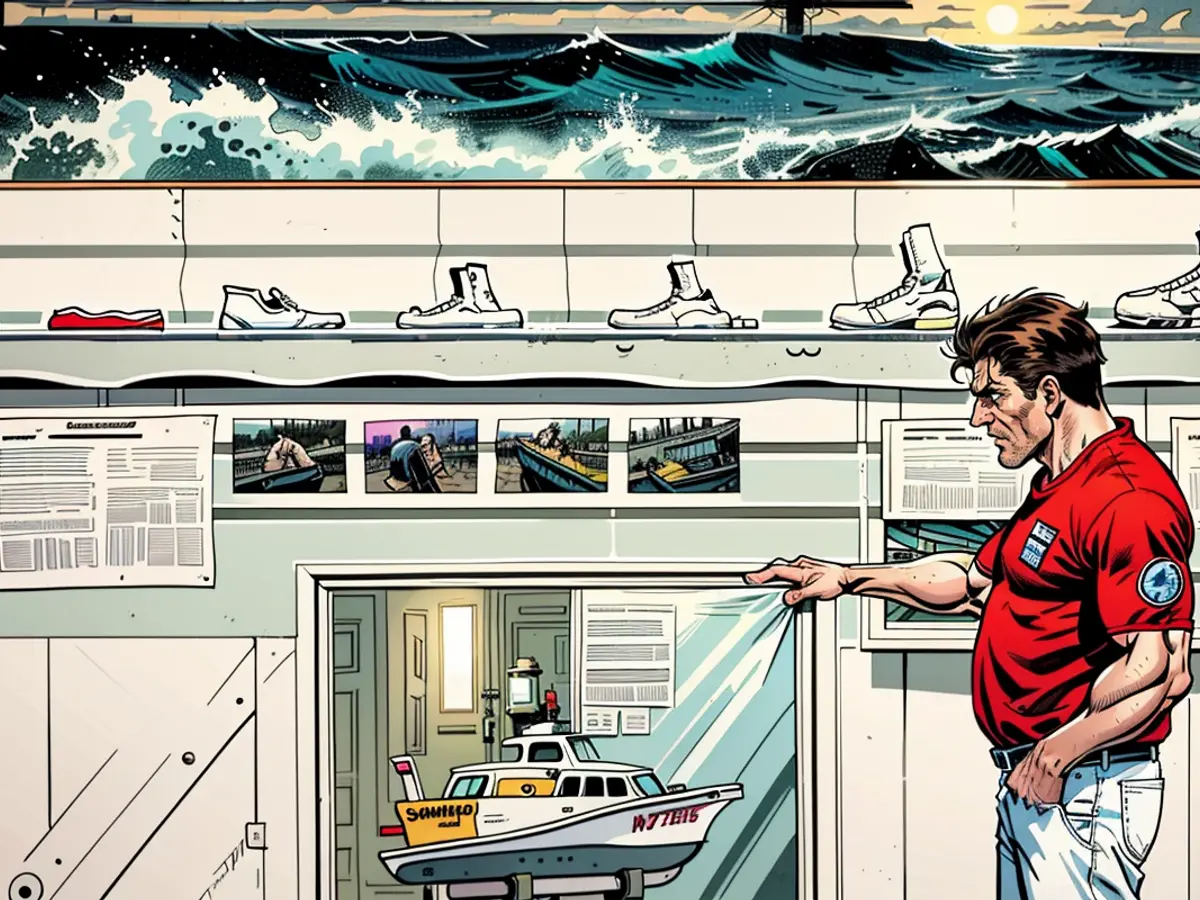Seafaring - From Fate to Salvation - How Sea Rescue Began
There were two devastating shipping accidents in the mid-19th century that made the coastal residents of the North Sea aware of what was needed: organized sea rescue. A new museum in the renovated, historical lifeboat station of Spiekeroog has been telling this story for some time now. Hartwig Henke, a volunteer with the lifesavers, says, "This story is closely linked to Spiekeroog." One of the tragic shipping accidents that served as a catalyst for maritime rescue at sea occurred off the coast of the island.
On November 6, 1854, the Bark "Johanne" ran aground before Spiekeroog during a severe autumn storm. "That was a truly tragic story," Henke recalls. The ship was on its first voyage, and over 200 people wanted to emigrate from Bremerhaven to America using the sailing ship. "However, they set sail in November, the worst time of year in the North Sea," the 81-year-old explains.
The approximately 120 islanders were unable to help the shipwrecked passengers, and they couldn't launch a rescue boat. Around 80 passengers drowned in the turbulent surf. Many of the dead are buried in the "Drinkeldodenkarkhoff," the cemetery for the homeless of the island. A few years later, in 1860, another tragedy occurred off Borkum when the brig "Alliance" was wrecked in the surf.
"There was a shipwreck every two weeks," Henke says, recalling the newspaper reports that sparked widespread outrage. "The lack of a sea rescue service was also a topic of discussion beyond the coast," he adds. Shortly thereafter, the first twelve lifeboat stations were founded. In 1861, on Langeoog and Juist, and later on Spiekeroog.
"It all goes back to the Emden customs officer Breusing, who saw from Emden what was happening along the coast," Henke explains. Navigation in the German Bight has been a challenging endeavor due to sandbanks and weather since medieval times. Estimates suggest that around 50 ships went into distress in the middle of the 19th century. "It was a cynical saying: There was a shipwreck every two weeks," Henke says. At the time, radio communication was not yet available, and motorized rescue boats were still lacking.
Breusing founded the Society for the Rescue of Shipwrecked in East Frisia - a precursor to the current German Maritime Search and Rescue Service (DGzRS). He didn't let skepticism, insufficient donations, and a lack of volunteers deter him. Today, there is a network of 55 lifeboat stations along the North and Baltic Seas, between Borkum and Ueckermunde.
Historical lifeboat station now publicly accessible
A lifeboat station was built on Spiekeroog in 1909 for a lifeboat - the museum is now housed there. The massive brick building, which is now under monument protection, stands freely on a small dune surrounded by salt marshes. It is visible from a distance. Recently, the building was renovated and converted for the new exhibition.
In the exhibition, pictures, newspaper articles, and audio stations provide insights into the history of lifesavers. The open model of a lifeboat and the equipment of the volunteers reveal the hazards that lifesavers face. And then there's the historical building itself, which is worth discovering. Previously, as Henke explains, lifesavers could take their lifeboat out of the shed through doors on both sides. Horses brought the boat through the salt marshes to the mudflats. "That was then a huge effort, as they could only row during a storm."
For the North Sea island, the museum, which is scheduled to open in mid-June, is expected to become a new tourist attraction in the island's western part - even outside the main season. "We've always said something had to be done with this house," says Ansgar Ohmes, managing director of Nordseebad Spiekeroog GmbH, which also operates the new museum. "It's a monument that was not publicly accessible in the past decades." In the future, there will also be lectures and cultural events in the museum.
From Sand Robbers to Lifesavers
The Spiekeroog station was closed in 1948. Since then, the location in Neuharlingersiel on the mainland has secured the area. The last Spiekeroog lifeboat "Alexander" is now on display at the German Maritime Museum in Bremerhaven. More than 150 people were rescued from the sea by the Spiekeroogers during their history.
With the founding of the lifesaving service, there was also a change in attitude towards shipwrecks, says Hartwig Henke. Until then, shipwrecks were seen as an unavoidable fate. Coastal residents seemed powerless against shipwrecks - especially since the poor coastal population also profited from beach property and could keep some of the beach goods. With lifesaving, the will to help moved to the forefront. This service to humanity is what lifesavers are still committed to today, says Henke.
- The devastating shipwreck of the Bark "Johanne" off Spiekeroog in 1854 highlighted the need for organized sea rescue.
- The new museum in Spiekeroog's historical lifeboat station chronicles the story of maritime rescue in the North Sea.
- The shipwreck of the "Johanne" was a tragic event, with over 200 emigrants from Bremerhaven heading to America on their first voyage.
- Despite the efforts of the 120 coastal inhabitants, about 80 passengers drowned in the turbulent surf, leading to widespread outrage.
- Breusing, an Emden customs officer, founded the Society for the Rescue of Shipwrecked in East Frisia, which later evolved into the DGzRS.
- The establishment of lifeboat stations along the North and Baltic Seas, such as on Langeoog, Juist, and Spiekeroog, was a direct result of this initiative.
- Today, the historical lifeboat station on Spiekeroog is a museum, showcasing images, newspaper articles, and equipment used by lifesavers.
- The upcoming opening of the museum in mid-June is expected to attract more tourists to Spiekeroog, particularly in its western region.
- The change in attitude towards shipwrecks with the introduction of lifesaving services transformed coastal inhabitants from 'Sand Robbers' to 'Lifesavers'.








